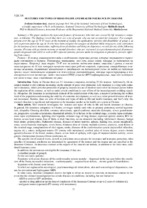Features and types of risks in life and health insurance in Ukraine

Authors
xmlui.dri2xhtml.METS-1.0.item-advisor
Date
2020Publisher
Bibliographic entry
Demianchuk, S. Features and types of risks in life and health insurance in Ukraine / S. Demianchuk ; науч. рук.: M. Arych, M. Levon // Экономика и маркетинг в промышленности [Электронный ресурс] : материалы студенческой научно-технической конференции, проводимой в рамках международного молодежного форума «Креатив и инновации' 2020», Минск, 14−23 апреля 2020 г. / редкол.: А. В. Данильченко [и др.]. – Минск : БНТУ, 2020. – С. 31-32.
Abstract
The paper analyses the types and features of insurance risks that are covered by life insurance companies. in Ukraine. The findings reveal that there are a lot of people who are not accepted for insurance. For example, persons over the age of 75-97 years at the moment of signing the application; persons with disabilities of group I, as well as persons under the age of 18 who have been assigned the category of disabled child; drug users, toxic substances for the purpose of toxic intoxication, suffering from alcoholism and being on dispensary records for any of the following reasons; Persons with persistent nervous or mental disorders who are registered at a psychoneurological dispensary; people diagnosed with AIDS as well as HIV-infected persons; persons under investigation or prisoners; persons suffering from cancer.
Abstract in another language
В статье анализируются виды и особенности страховых рисков, которые покрываются страховыми компаниями в Украине. Результаты показывают, что есть много людей, которые не пологаются на страхование. Например, лица старше 75-97 лет на момент подписания заявки; инвалиды I группы, а также лица в возрасте до 18 лет, которым назначена категория ребенка-инвалида; наркоманы, употребляющие токсичные вещества, страдающие алкоголизмом и находящиеся на диспансерном учете по любой из следующих причин; лица с постоянными нервными или психическими расстройствами, которые зарегистрированы в психоневрологическом диспансере; люди с диагнозом СПИД, а также ВИЧ-инфицированные; лица под следствием или заключенные; лица, страдающие от рака.
